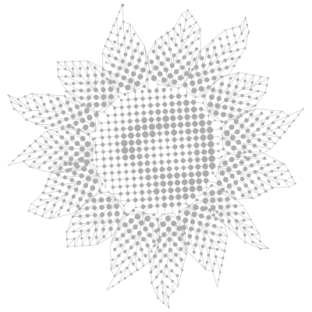NITROGEN FERTILIZERS – USE WISELY!
Nitrogen form
Nitrogen fertilizers are needed to get the highest yields for most crops. The best nitrogen rate for each field depends on several factors, including:
- the content of nitrate form of nitrogen in this field
- last year’s culture (predecessor)
- application of organic fertilizers
- projected yield of cultivated crop
- the amount of nitrates in irrigation water
- timeliness of fertilizer application
Efficient use of nitrogen fertilizers is useful for energy conservation and protection of groundwater. For every 100 pounds (45 kg) of nitrogen added to the soil, an average of 19 gallons (72 liters) of diesel fuel is used. To use energy efficiently, use the right amount of nitrogen.
Nitrogen washing
The University of Nebraska has tracked the movement of nitrates to depths of more than 40 feet (12 m) in several places. In one experiment, 200 pounds (91 kg) of nitrogen was applied to the loams each year. After eight years of nitrogen application, soil samples were taken for analysis from a depth of 40 feet (12 m). The control area (no application area) contained 0.9 ppm (mg / kg) of nitrate at a depth of 40 feet (12 m), while the nitrogen-treated area contained 2.1 ppm (mg / kg) of nitrate at the same depth. This experiment demonstrates that manufacturers must use all soil nitrogen sources so that the nitrogen used is used efficiently and is not lost during leaching.
The need for nitrogen
The need for nitrogen for crop production directly depends on the crop and its yield. Corn needs about 1.1 pounds (500 g) of nitrogen per bushel (25 kg) to grow the plant and produce grain. If you collect the grain and return the stems and leaves to the soil, about two-thirds of the nitrogen will be removed from the field. Nitrogen in stems and leaves will return to the soil as organic nitrogen. Nitrate left over from previous fertilizer application can be measured by laboratory analysis. This nitrate will be used to regulate the rate of nitrogen fertilizers for the next crop. To properly assess the nitrate nitrogen content of the soil, samples taken from the top 8 inches (20 cm) of soil and sometimes from a depth of 8-36 inches (20-90 cm) should be analyzed.
Legumes (soybeans, beans, alfalfa, clover and some other cover crops) also provide nitrogen to the next crop. Studies from Iowa, Nebraska and Kansas have shown that growing soybeans as a precursor crop can yield about 40-50 pounds (20-25 kg) of nitrogen per acre (0.4 ha). In addition, growing corn after soybeans gives a good increase in yield (compared to corn after corn). Alfalfa can leave about 100 pounds (45 kg) of nitrogen for the next crop, clover – about 70 pounds (30 kg) of nitrogen. All this nitrogen that remains in the soil after legumes should be removed from the recommendation of nitrogen fertilizers for the next crop.
Water for irrigation
Irrigation water can also be a source of nitrate nitrogen. But you should always check such water for nitrate content, for the correct use of this source of nitrogen.
The University of Nebraska took soil samples after irrigation to detect nitrates and found that irrigated fields contained an average of about 65 pounds (29 kg) of nitrate nitrogen in 1983 (start of experiment) and up to 90 pounds (41 kg) of nitrogen in 1987 (end of experiment) ). In all irrigated fields, the yield was equal to or higher than the yield of fields without splicing.
Leaching of nitrats
Leaching (leaching) of nitrates occurs when the water moves deeper than the place where the root zone of plants. Sources of leaching are natural rains and irrigation water. Proper irrigation planning must be followed to prevent leaching during the growing season. Rains in the fall and spring cause most leaching problems. The amount of leaching depends on the ability of the soil to store water and the amount of water flowing through the soil.
Formula for estimating leaching losses: ? = ?/?? х ???, where d – nitrate leaching depth (cm); Pv – soil capacity; a – amount of wash water (cm).
For example, we compare leaching at a soil capacity of 46% (loam) and at 22% (sand). The amount of wash water moving through the root zone is 10 inches (25 cm). In this case, the depth of nitrate leaching will be 22 inches (56 cm) of loam and 45 inches (114 cm) in sand. These calculations illustrate the problem of leaching of nitrates in sandy soils.
Nitrogen application rates
Nitrogen application rates should be adjusted on a case-by-case basis. Nitrogen application in early spring or late autumn is permissible only for loamy soils, but not for sandy soils. For very sandy soils, most of the nitrogen should be applied during the growing season and / or through the irrigation system. The starting fertilizer, placed 2-3 inches (5-8 cm) from the side of the seed, should contain 20-30 pounds (9-14 kg) of nitrogen for sandy soils. 20-40 pounds (9-18 kg) of nitrogen can also be used in herbicide treatment.
This article is based on information kindly provided by Ward Laboratories, Inc.
Write to us
and we will find an opportunity
for cooperation


